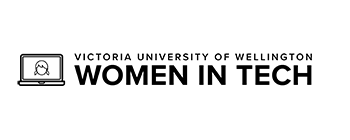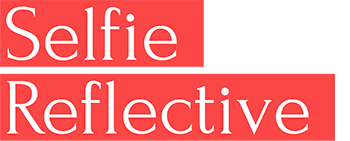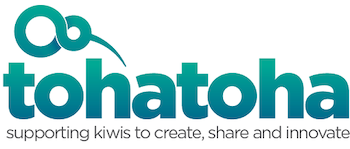Tēnā koutou katoa,
NetHui is for the whole community, and we always have a diverse group of local and international attendees. For our international friends, who might be learning about Aotearoa New Zealand for the first time, we wanted to provide some support about how to make the most of NetHui.
We want to foster kōrero Māori at NetHui, so we asked Ian Cormack to help explain some Māori concepts you will hear. This blog is for people who do not know te reo Māori, so they can use it as a resource on their learning journey.
Ian and his wife, Shirley, are co-directors of Taumatua Māori Language Services Ltd. Ian is a Māori Language Commission certified translator and an author of 14 Māori language textbooks. In the past he has been a Māori language teacher in secondary schools, an inspector of schools, a Māori language advisor and the National Manager for Maori Education for the Education Review Office. He regularly tweets under the handle @kiwitoa. Ian’s whakapapa links him to the South Island tribes of Te Rapuwai, Waitaha, Ngāti Māmoe and Ngāi Tahu.
Pōwhiri/mihi whakatau
The traditional Māori welcome extended to visitors is often called a pōwhiri (which can also be spelt as pōhiri). It literally means to beckon or wave at somebody. When it is conducted on a marae (a Māori meeting place which often consists of a wharenui (a meeting house) and a wharekai (a dining house/hall) there is a procedure that is normally followed. On some occasions the visitors might be challenged (a wero or taki) by one or more warriors brandishing taiaha (a type of staff weapon). A twig or leaf will be laid in front the of the visitors. One of the visitors will pick it up to signal that they have come in peace. They will then proceed on to the grounds of the marae and the local women will call them on to the marae – this is called a karanga. As women give birth to children it is their right to give birth to a meeting.
The visitors will then be seated at a distance from the locals and there will be speeches of welcome, in most cases by the male elders of the local people. Generally speeaking these speeches are in two different formats. Pāeke – this is where the local elders speak and when they have finished it is the visitors turn to speak. The other format is tauutuutu – this is where the speeches alternate between locals and visitors.
Once the speeches are concluded the visitors will be invited to come and hongi (pressing of noses together) and shake hands. Normally soon after the conclusion of the welcome ceremony the visitors will be invited to partake of refreshments which will normally consist of a drink and some food.
However, welcomes are carried out often in other settings that are not specifically Māori – they may still be called pōwhiri, but often they are called mihi whakatau (a welcome that takes place not on a marae). There is not normally a challenge, but sometimes there is a karanga by one of the local women . This is followed by speeches of welcome in either the pāeke or taututuutu format. After that there is the hongi and shaking of hands.
Often these days as well, when people meet for various reasons, the meeting may begin with a speech from one of the people initiating the meeting welcoming everybody to the meeting. There may or may not be occasion for one or more of the visitors to respond. There is then an opening karakia (prayer) and the meeting starts. This is just another less formal type of mihi whakatau.
Common greetings in Māori
To say hello to one person say - tēnā koe. To say hello to two people – say tēnā kōrua. To say hello to three or more people say – tēnā koutou.
To say hello or hi informally to someone you already know use kia ora.
To ask how someone is you can say Kei te pēhea koe? (How are you). The answer is usually Kei te pai (fine/good, thanks).
Here is a youtube video that will give you practice in saying these greetings.
Saying welcome
Two common ways of saying welcome in Māori are ‘nau mai’ (No -my) and ‘haere mai’ (high-re (as in red) my). Bothe literally mean ‘come (towards me)’ Quite often these will be repeated up to three times. For example – nau mai, haere mai, haere mai.
Māori words commonly used in New Zealand English
Whakarongo (Fah-kah-ro-ngo) – listen
Kōrero (cor-re-ro) – speak, talk, story
Hui (who-ee) – meeting, to meet
Whānau (Far-noh) – family (literally – be born)
Iwi (ee-wee) – tribe
Hapū (hah-poo) – sub-tribe (literally – pregnant)
Whenua (fen-noo-ah) – land (literally – placenta)
Mana (mah-nah) – status, prestige, power, control
Reo (re-aw) – language
Māori (Mah-aw-ree) – Literally means native to the land
Tikanga
Tikanga (tee-kah-ngah) is often translated as custom or the customary way of doing things. However, the sense of the word is more fluid than that. It is doing the right or appropriate thing at the right time in accordance with what your people would expect in that situation. It is not static, but dynamic.
Te Tiriti o Waitangi – Treaty of Waitangi
The Treaty of Waitangi was a written agreement made in 1840 between the British Crown (the monarch) and more than 500 Māori chiefs. After that, New Zealand became a colony of Britain and Māori became British subjects. However, Māori and Europeans had different understandings and expectations of the treaty.
The treaty was drafted in English and then translated into Māori by missionary Henry Williams and his son Edward. It was presented to around 500 Māori at Waitangi on 5 February 1840 and there was much debate. The next day, 6 February, more than 40 chiefs signed the treaty. Copies of the treaty were taken around the country, and many more chiefs signed. Most signed a Māori-language version.
Reasons why chiefs signed the treaty included wanting controls on sales of Māori land to Europeans, and on European settlers. They also wanted to trade with Europeans, and believed the new relationship with Britain would stop fighting between tribes.
Those who didn’t sign the treaty were concerned they would lose their independence and power, and wanted to settle their own disputes. Some chiefs never had the opportunity to sign it, as it was not taken to all regions.
You can read more about the Treaty of Waitangi here:
https://waitangitribunal.govt.nz/treaty-of-waitangi/
https://nzhistory.govt.nz/politics/treaty-of-waitangi
https://teara.govt.nz/en/treaty-of-waitangi
There are two parties to the Treay of Waitangi. Māori – the tangata whenua (people of the land) and the Crown. The Crown is all those who are not Māori. They are often called the tangata Tiriti – the Treaty people.
Karakia
Often when Māori are present meetings will begin and end with a karakia, a prayer. This may or may not represent a particular denomination or faith. It may a traditional Māori one.
Kaupapa
The literal meaning of kaupapa is floor, stage, or platform. However, it is mostly used metaphorically to mean any of these (depending on the context): topic, policy, matter, discussion point/s, plan, purpose, scheme, proposal, agenda, subject, programme, theme, issue, and initiative. A very useful word indeed that is used a lot, even in NZ English.
Whakapapa
Is the Māori word for genealogy. Māori place great store by whakapapa. Māori believe that you are the living embodiment of your whakapapa, your genealogy. In a formal situation you are the living representative of your forbears, you ancestors and your descendants yet to come. What you do you do as their representative. Your glory is theirs, likewise your shame is theirs.
It is very important to establish whakapapa links with people you meet. Whereas many people might ask someone they have met to give them their name. Many Māori on the other hand may ask, “Where are you from?”. The aim is to find a whakapapa link to that person.
Pepeha
These days in New Zealand you will often hear people giving a pepeha – a saying that identifies them and where they come from. It tells a story of the places and people they are connected to. Many young children at school are able to recite their own pepeha. It may connect you to your waka (canoe), or ships that you came to New Zealand on, tribe or subtribe, your mountain, river, lake, etc. Here is one of mine, for example. Ko Aoraki te maunga, ko Waitaki te Awa, ko Uenuku te whare, ko Rapuwai, Waitaha, Kāti Mamoe me Kāi Tahu ngā iwi – Mount Cook is the mountain, Waitaki is the river, Uenuku is the meeting house, Rapuwai, Waitaha, Kāti Māmoe and Kāi Tahu are the tribes.
Manaakitanga
Manaakitanga is a core value of Māoridom. It can loosely be described as ‘hospitality’. A duty to look after, care for, feed and respect your visitors. It is reciprocal. Manaakitanga extended will in time be manaakitanga received.
Kaitiakitanga
In its simplest form kaitiakitanga means guardianship and protection. It is is based on traditional Māori world views and includes the conservation, replenishment and sustainability of the environment. It is about safeguarding the future. A kaitiaki is a guardian. This can be a person or group that cares for an area such as a lake or forest.


































